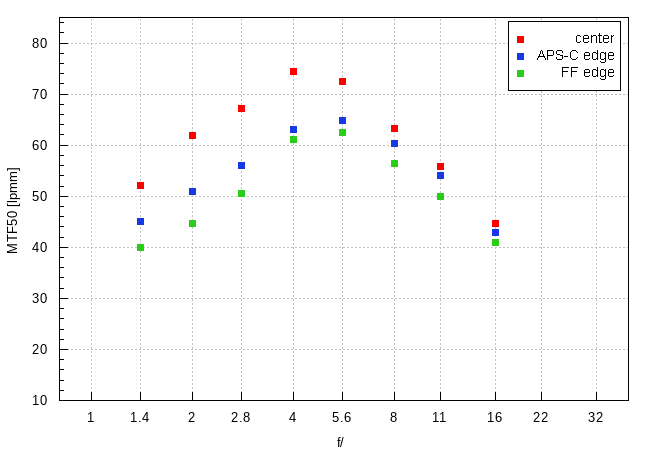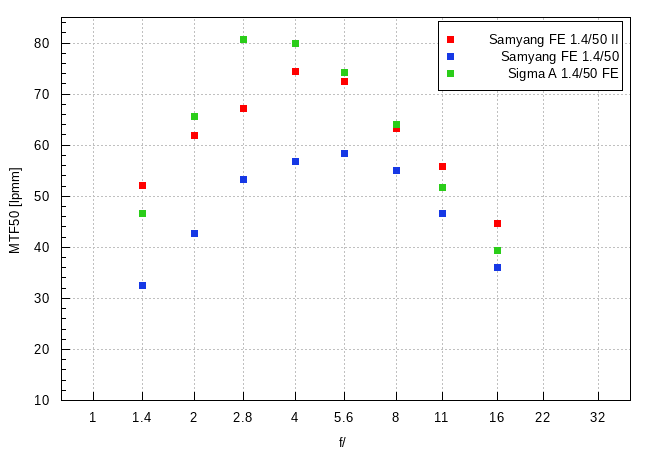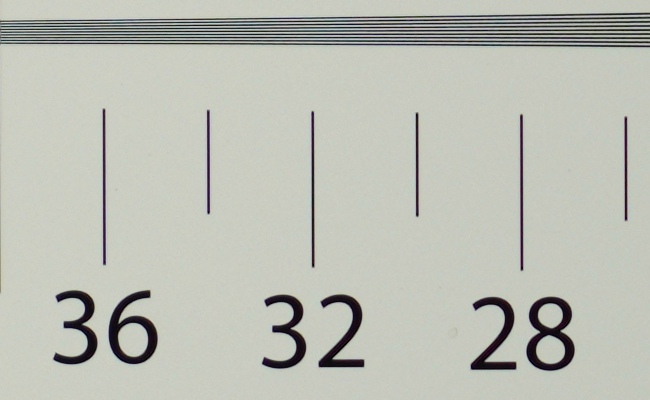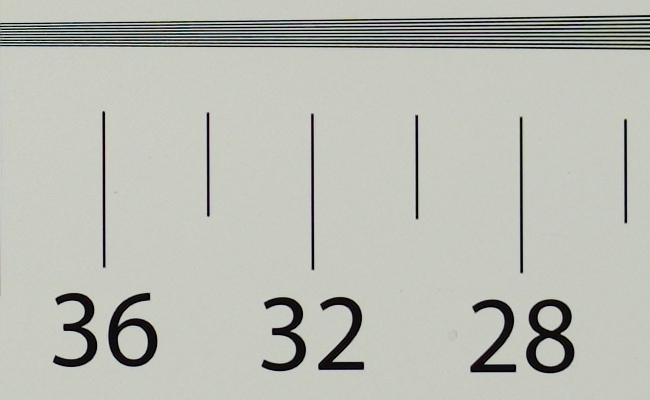Samyang AF 50 mm f/1.4 FE II
4. Image resolution
Let's check how the Samyang AF 50 mm f/1.4 FE II compares – its results in the frame centre and on edges of the APS-C sensor and full frame we present below.

The analysis of the performance in the frame centre will be easier if you compare the results of the tested lens to these of its predecessor and the Sigma A 50 mm f/1.4 DG DN. Let's glance at a graph below.
Please Support UsIf you enjoy our reviews and articles, and you want us to continue our work please, support our website by donating through PayPal. The funds are going to be used for paying our editorial team, renting servers, and equipping our testing studio; only that way we will be able to continue providing you interesting content for free. |
- - - - - - - - - - - - - - - - - - - - - - - - - - - - - - - - - - - - - - - - - - - - - - - -

Three things stick out at once. Firstly, there is a huge progress when you compare the performance of the new lens to that of its predecessor. The new Samyang is better at all apertures; what's more, it fares well up from the maximum relative aperture where it is able to win also a duel with the Sigma. Secondly, in the case of the Samyang image quality doesn't increase distincly on stopping down the aperture so, as a result, after a slight closing down the Sigma fares better, allowing you to achieve better resolution. Thirdly, by f/11 and f/16 the new Samyang is leading again but its results are suspiciously high, not corresponding to results that should be already limited by diffraction. It seems that at the end of the range the aperture of the new Samyang doesn't close down as much as it should have.
In order to analyse the performance on the edge of the frame we have to return to the first graph of this chapter.
In case of the edge of the APS-C sensor you don't have any reasons to worry. Even by f/1.4 you land noticeably above the decency level and on stopping down the aperture you are able to reach a very good value of over 60 lpmm.
The situation doesn't change distinctly when you progress to full frame and it is a really good piece of news. At the maximum relative aperture we got a result of practically exactly 40 lpmm and it can be considered as usefull. Again, on more significant stopping down the lens is able to reach over 60 lpmm.
To sum up, the new Samyang outclassed its predecessor and completely deserves to be called a sharp lens. Although its maximum results are slightly weaker than these of the Sigma, it would be difficult to find any weak points in its performance. It's also worth to remember that the Samyang is by almost $260 cheaper than the Sigma and that fact might influence many potential customers.
At the end of this chapter, traditionally, we present crops taken from photos of our resolution testing chart which were saved as JPEG files along the RAW files, used for the analysis above.
| A7R III, JPEG, 50 mm, f/1.4 |
 |
| A7R III, JPEG, 50 mm, f/4.0 |
 |






